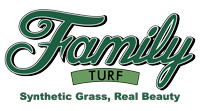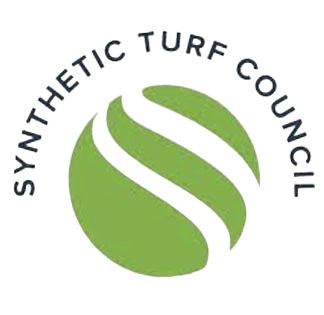The Most Frequently Asked Questions About Artificial Grass in Huntington Beach
You’ve asked, and we’re here to answer! If you’ve been looking at synthetic turf, we have answers to some of the top questions we get. Read on to check if your questions are here.
What Exactly is Artificial Turf?
Artificial turf is made from synthetic materials like nylon, polyethylene, or polypropylene. The grass comprises of a backing material and fibers made to look like grass. Synthetic grass today is available in a wide variety of colors and lengths to fit any need.
How Long has Fake Grass Been Around?
Synthetic grass gained its popularity thanks to sports in the 1960s, but it rapidly became used for lawns across the nation soon after. You can check out the history of artificial turf landscaping in this article.
Is it Safe for Kids & Pets?
Yes, synthetic grass is non-toxic and made from materials that are pet-friendly and safe for kids. Moreover, if you choose to install synthetic grass on your property, you’ll also create a better play environment for your loved ones because you won’t need fertilizer, pesticides, or other harsh chemicals anymore.
What Are Some Turf Terms I Should Know?
We get this query a lot! So here are some of the most common synthetic turf terminologies you’ll find while shopping.
Backing
The backing weight is what keeps everything together. It’s fundamentally the underside of artificial turf.
Yarn/Fiber
The yarn is the “face” of the grass. This is what modifies depending on what colors and length you desire.
Fiber Weight
Fiber weight refers to how much yarn is used per square yard of turf. The higher the face weight, the longer and denser the synthetic turf’s grass will be.
Infill
The infill is what maintains the artificial turf blades upright, guards the backing from damage caused by UV rays, and gives a more realistic feel.
Pile Height
The pile height refers to the length of the grass blades. Pile height is what makes your artificial lawn looks real.
How Can it Be Used?
There are many selections to choose from when it comes to synthetic turf. Because it can be installed almost anywhere, you gain a competitive edge you wouldn’t get with natural grass. Here are some of the most famous types of turf we have:
- Residential: Ideal for your front or backyard, Shawgrass residential turf is made to look the finest and last for many years to come.
- Commercial: Can help reduce how much you pay on annual maintenance costs and allows you to focus on your actual business priorities and not landscaping.
- Playground: Our playground turf is designed for high-use play areas, gives the best durability and return on investment, and is IPEMA Certified and ADA accessible.
- Pet Turf: We make synthetic grass specifically for your four-legged friends. This turf is crafted for superior drainage to allow urine to flow through quickly.
- Active Lifestyle: Shawgrass offers a complete line of putting turf, batting cage turf, and recreational turf, all created to look and perform just like the real thing.
- Performance Turf: With Shawgrass performance turf, you can convert your gym or indoor sporting venue into a top-notch facility.
Can it Be Installed on Hard Surfaces?
Yes, you can install artificial turf over concrete, paving slabs, and asphalt. We do suggest adding further cushioning under the turf to make it softer. Any large cracks or dips should be filled and leveled before adding the turf.
Can it Be Put Over Natural Grass?
No, we do not recommend placing synthetic turf over existing grass. This is because you can run into drainage problems, leveling issues, and it’s possible for some of the grass or weeds underneath to grow up through your artificial turf.
Could I Install it Myself?
While installing synthetic grass can be a DIY project, we don’t suggest it. To get a nice even-looking surface, you’ll want to rely on the pros. You can check out 8 reasons we DON’T advise you install it yourself in this article.
What Should I Ask My Installer?
Your artificial turf installer should be a wealth of knowledge. There are two categories of questions to ask an synthetic turf installer — before installation and after. Check out this article we did covering some of these questions.
How Do You Clean Synthetic Turf?
Cleaning synthetic turf is simple! It won’t require nearly as much maintenance that regular grass does. To keep your synthetic grass looking good, you should check out our guide to keeping it clean.
Can Synthetic Grass Melt?
Synthetic turf won’t melt because of the sun, but a hot ember from an open fire pit can melt your turf. That’s why we recommend adding a patio area using stones or gravel large enough to accommodate seating and installing a fire break for the fire pit.
How Long Will It Last?
With advances in technology, top-of-the-line artificial grass will last well over 10 years. There are many factors that affect how long the grass will last (if it’s in the sun or shade, how much foot traffic it gets, etc.), so we suggest connecting with our team to learn more about our warranties.
How Much Does It Cost?
The cost of your final synthetic grass project will vary depending on these factors:
- Square footage
- Site access & prep
- Type of turf
- Special features
Don’t See Your Questions?
We’d love to hear from you! Contact us today with any other queries you might have about our artificial turf.




